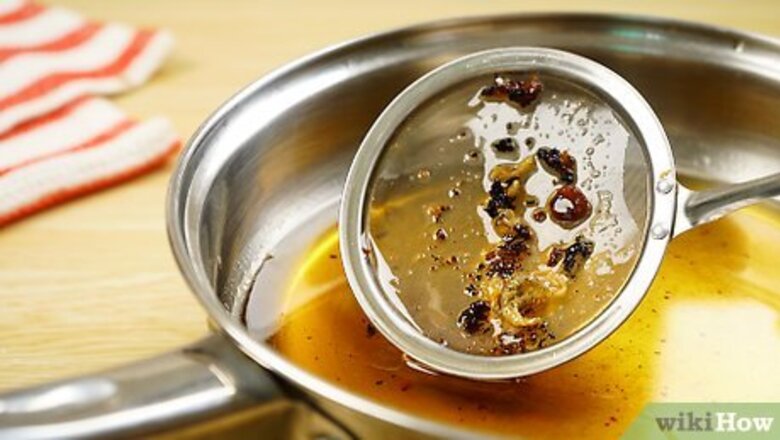
views
Cleaning Cooking Oil
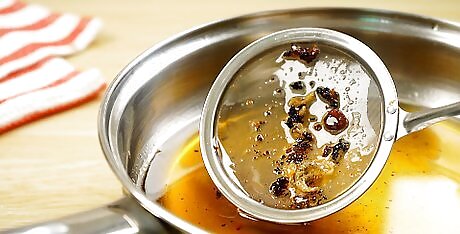
Skim the oil. When you fry foods, the foods leave pieces behind that cloud up the oil. Skimming the oil takes away some of these pieces, though you'll need to take further steps to remove all of them. Skimming the oil just takes care of the big pieces. Use a skimmer to get rid of any floating pieces of food that are on top of or inside the blackened oil in the pot. Throw them away. You can also use a skimmer to clean the oil while you're cooking. You can buy oil skimmers at most big-box stores that have household items. Oil skimmers are pretty cheap. You can get one for about $12 or so, and you can also buy them online or at a restaurant supply store. They are a metal mesh net circle fastened to a handle.
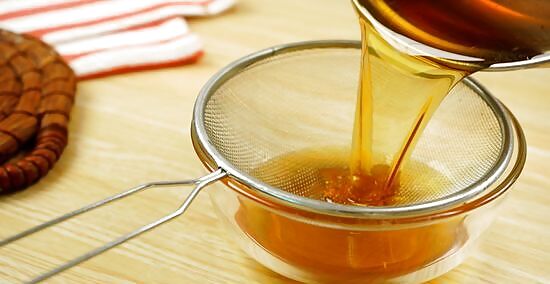
Strain the oil. After you use a skimmer to remove the larger pieces, you need to strain the oil next. Straining the oil removes the smaller bits of sediment, so your oil is less cloudy overall and you don't have bits of food left in it. You'll need a fine-mesh strainer or cheesecloth for this process. Wait until the grease is cool to strain it. Have a clean pot or bowl ready. Pour the grease through the fine mesh strainer. Make sure not to pour too fast and overflow the strainer. Also, if you see sediment in the bottom, don't pour the last of the oil in. Leave the sediment where it is, and toss it later. If you don't have a strainer, try cheesecloth over a funnel. You can also try coffee filters. If it's hard to pour, use a measuring cup or large ladle for the straining process by straining a little bit of the oil at a time.
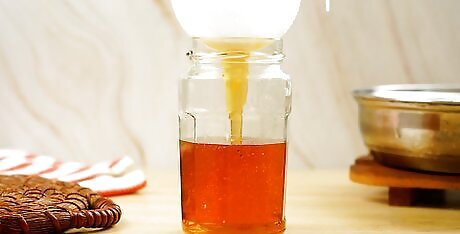
Pour it back into the container if it's empty. Once you've strained the oil, get the original container back out. Use a funnel to pour the oil back into it. The original container was designed to store the oil, so it's fine to use it again. Just make sure you don't pour hot oil into a plastic container. Only use the original container if you used all of the oil in it to deep fry. Otherwise, you'll be adding used oil to new oil. Don't place the cover on the container until the oil has completely cooled.
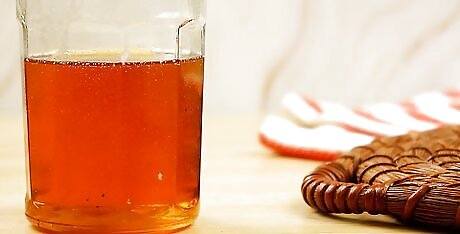
Store the oil. It's not just cooking that breaks down oil. How you store it can also break it down. You need to keep the oil away from humidity, light, and heat to keep the oil in prime cooking condition. Light and heat will further degrade the oil as it sits in storage, increasing the chances you can't reuse it. Do not store the oil above the stove, where it will be subjected to secondary heat from other cooking. Instead, store the oil in a cool and dark location. The refrigerator is a good choice if you have room. Oil in the refrigerator will be thicker and may look cloudy (white), but it will be fine once it comes to room temperature.
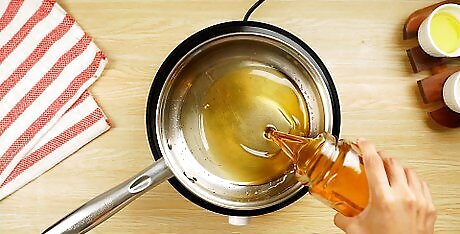
Reuse the oil with similar foods. Keep in mind that once cooking oil is used, it is going to harbor some of the smells of the food you last used in it. For example, cooking fish in oil will impart its flavor to the oil, so you only want to fry fish or other proteins in it, not something sweet. Keep your oils separate. If you used one for cooking fish, put it in its own bottle so you don't use it to cook something sweet. Label each bottle of oil with what you cooked in it, as well as the date you bought it or last cooked with it. Reusing used cooking oil can make a lot of sense financially if possible. For example, the peanut oil used to make one batch of French fries can cost as much as $10.
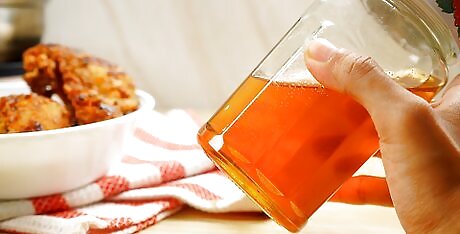
Reuse your cooking oil for other purposes. Just because you used the oil for deep frying the first time doesn't mean you have to use it for deep frying the second time after cleaning it. You can use it to cook in other ways, such as making a stir fry. You can also use the oil to bake. Remember, again, that the oil will retain some of the flavors and smells of the first food it was fried in, though, so always use it with similar flavors.
Keeping Oil Clean To Begin With

Pick oils with a higher smoke point. The smoke point is the temperature where an oil starts to smoke, meaning it is breaking down more quickly. Picking an oil with a high or medium-high smoke point means it won't break down as much while it cooks. Sunflower, palm oil, and avocado oil all have high smoke points and are suitable for frying. Peanut oil, canola oil, and grapeseed oil have medium-high smoke points and can also be used for frying. Refined oils can be heated hotter than raw oils and are thus a better choice if you're planning to reuse the oil. For example, more refined olive oil, such as refined or "light" olive oil, can be used for frying, while it's better to skip extra virgin olive oil for this purpose.
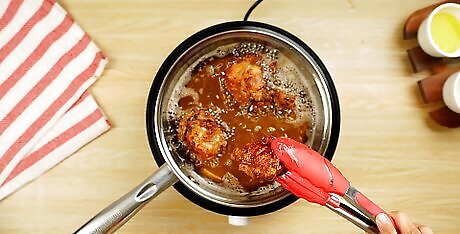
Control the kind of food you put in the oil. One way to cut down on cloudiness in the oil is to pick foods that won't leave as much food behind in the oil. Any food left behind will make the oil cloudier and less usable. For example, using breaded foods leaves behind more pieces than using battered foods. Foods just dredged in flour will leave even more food behind.
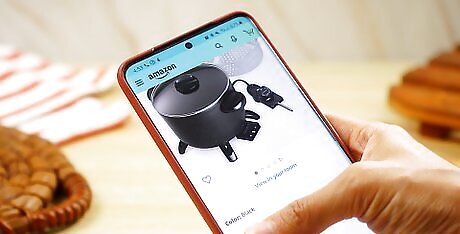
Invest in an electric fryer. In restaurants, oils tend to break down more slowly because of the way the heating element works. Basically, it has a cooler area at the bottom where food can fall and not burn. The only way to replicate the effect at home is to purchase an electric fryer. While an electric fryer is an investment, it can be a good one if you fry foods often. It can help you reuse your oil, as well as help you control the temperature of your oil.
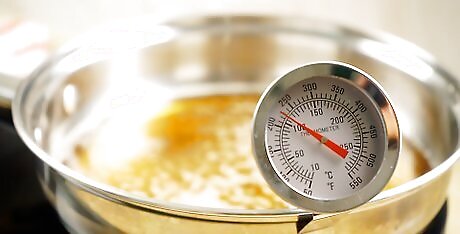
Don't overheat the oil. The oil will become quickly unusable if you overheat it. You don't want to under heat it either, though, or it will take longer to cook the food and more debris from the food will fall off of it and into the oil. Make sure you are frying below the smoke point for your oil. If you don't know the smoke point, you can look it up online. Use a frying thermometer to keep an eye on the heat. Having a thermometer will also help you cook your food at the right temperatures, resulting in better flavor. When you're done cooking your food, turn off the heat. The longer you keep the heat on, the more likely the oil is to break down There comes a point where you can no longer use blackened oil at all, so keeping the oil the proper temperature will increase the chances you can clean and reuse it. Most oils with a medium-high to high smoke point can take temperatures up to at least 400 degrees Fahrenheit, though some can take even higher temperatures. For example, avocado oil has a smoke point of 520 degrees Fahrenheit.
Knowing When to Toss the Oil
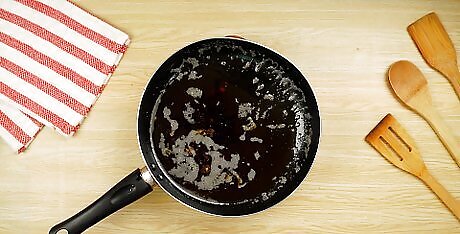
Replace the oil when it's too dark or foamy. Sometimes, you need to throw in the towel and replace the oil. There's no clear rule on how many times you can reuse oil. However, you do have signs you should look for when to toss the oil. If it's dark even after you filter it, it's time to throw it out. If it has foam on the top, it's also time to throw it out. Eventually, the oil will break down, and it will start making your food greasy instead of crispy it because it will seep into the food too quickly. When it foams, it will smoke too soon for frying, meaning you won't be able to fry the food at the right temperature.

Smell the oil. Old oil goes rancid, which smells bad. When you pull your oil out for frying, smell it first. If it doesn't smell right, it's time to toss it. You don't want to use an oil that will ruin a batch of food by making it taste awful. Rancid oil usually won't hurt you. However, the flavor is pretty bad. Cooking oil that has gone rancid will have a musty smell that smells somewhat like fish or a bad fast-food restaurant in addition to being dirty looking.
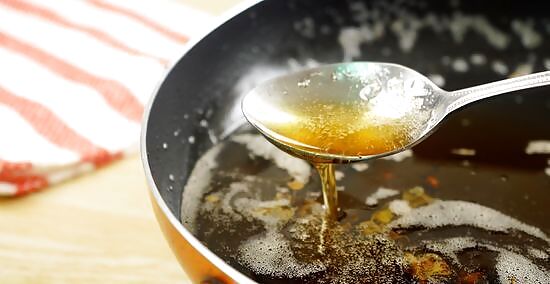
Watch for how thick it is. When you first get oil, it should pour smoothly, with the exception of oils that are solid at room temperature, such as coconut oil. However, as oil breaks down, it will get a lot thicker. If the oil is looking thick or sticky, it's time to toss it. However, remember that putting it in the refrigerator will also make it thick. Let the oil come to room temperature before checking it for thickness.
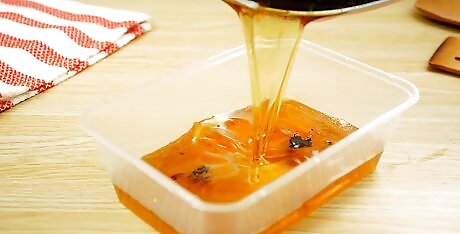
Throw the oil away properly. Once you figure out you need to throw your oil away, you should do it properly. For instance, it's a terrible idea to dump grease down the drain, as it clogs pipes not only at your house, but in the rest of the city. So don't get rid of oil that way once it's time to discard it. The best way to deal with oil is to put it in a container that you are planning to throw away anyway. Just don't put in plastic while it's hot. Even with hot water applied, the oil will get stuck in pipes and necessitate calling a plumber. In fact, tossing oil (fat and grease as well) down the kitchen drain is the leading cause of sewer backups. The oil clogs pipes over time and could cost you thousands of dollars in repairs. Never put your cooking oil into a storm drain as that can impact the environment, including fish and wildlife. Even with hot water and detergent you won't be able to get all of the oil down the drain. Some local disposal centers might accept used cooking oil if you don't want to put it in the trash for environmental reasons. Check with local government about whether your community recycles used cooking oil.
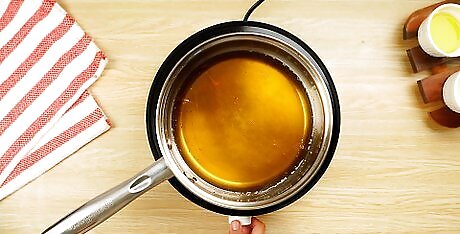
Be safe. Using cooking oil when deep-frying can be dangerous because temperatures can exceed 400 degrees Fahrenheit. Be careful not to burn yourself and to not get too close to the oil while it's frying. Use a frying screen to block flying oil when you're not turning the food. Oil is very flammable, making it easy to start a fire, especially if you're working near an open flame like a gas burner. It's a good idea to have a kitchen fire extinguisher nearby when working with cooking oil. Water turns into hot steam when it hits very hot oil. Water can cause oil to splatter and injure you, so don't let water get into the hot fat. If you have a grease fire, don't use water to put it out. The oil will just spread and splatter further. Cover the fryer with a metal lid if you don't have a kitchen fire extinguisher, and call 911 immediately. Keep any pots with hot oil on the back burner if you have kids in the house. That way, they can't come up and stick a hand in the pot or turn the pot over. Read the owner's manual before using a deep fryer. Don't add oil to the deep fryer unless it's turned off, has been wiped dry, and is away from water.



















Comments
0 comment